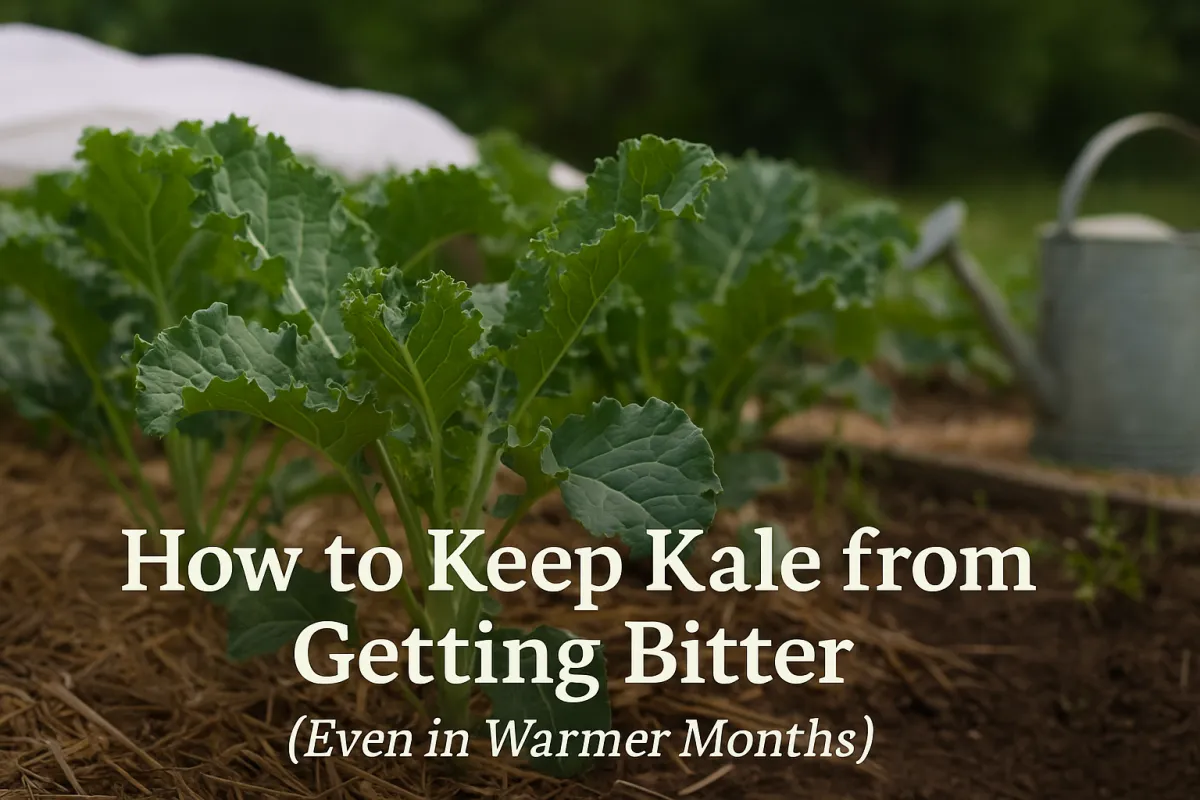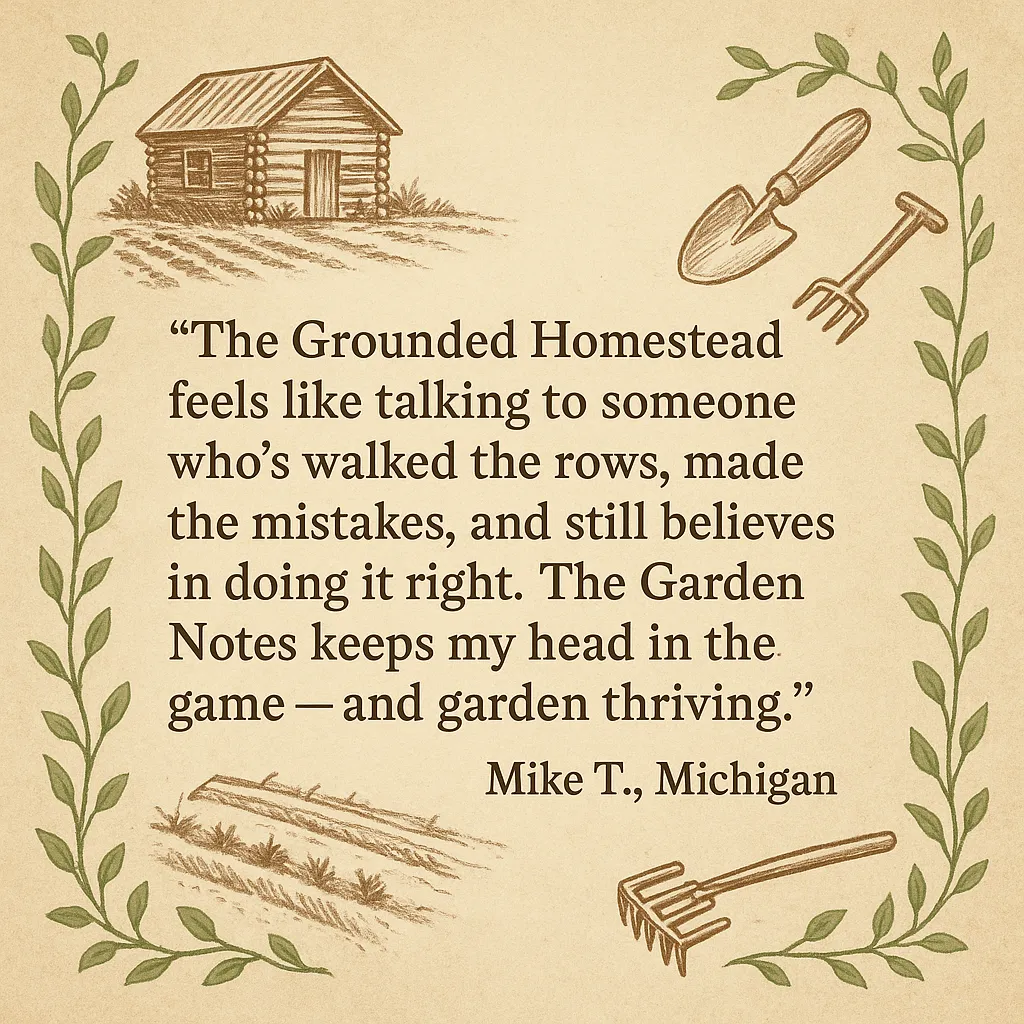
How to Keep Kale from Getting Bitter (Even in Warmer Months)
How to Keep Kale from Getting Bitter (Even in Warmer Months)
Sweet leaves, even in the dog days of summer—here’s how I do it.
I still remember the morning I learned that not all kale tastes the same.
It was July, already hot by 9 a.m., and I’d gone out barefoot to grab a handful of leaves for breakfast. I took a bite right there in the garden—and just about spit it out. It was bitter, like aspirin. That soft sweetness from spring? Gone.
Grandma saw my face and didn’t even look up from watering.
“Heat’ll do that to a good leaf,” she said.
And just like that, I knew I had some work to do.
Bitter kale doesn’t mean you’ve failed. It means the plant’s stressed. And with a few simple shifts, you can grow sweet, tender leaves all summer long.
What Makes Kale Bitter in the First Place?
Kale is part of the brassica family, and like all its cousins (broccoli, cabbage, etc.), it produces compounds called glucosinolates. These are natural defense chemicals. When the plant’s under stress—heat, drought, poor soil—it ramps those up, and you get that bitter, sulfur-like taste.
Here’s what causes it:
Heat stress: Anything over 80°F can push the plant into survival mode.
Inconsistent watering: Long dry spells followed by sudden soaking confuse the root system.
Poor soil: Nutrient-deficient, compacted, or overly acidic soil forces the plant to protect itself.
Grandma’s tip: “A bitter leaf’s just a stressed-out plant. Keep it comfortable.”
🌱 Zone note: In Zones 5–6, kale starts getting bitter by late June. In Zone 7 and up, bitterness can creep in even during spring if you’re not ahead of it.
Start with Strong Soil
Healthy soil is your first and best line of defense. Before you even think about watering or shading, check your bed.
Ideal pH: 6.0 to 7.0
Add compost or well-aged manure before planting.
Avoid compacted or heavy clay soils—kale roots like to breathe.
Mix in a slow-release nitrogen source like blood meal or feather meal to support lush, leafy growth.
And don’t forget: overwatering poor soil doesn’t help. You’ll just drown the roots.
Water Like You Mean It (But Not Too Much)
Kale likes moisture, but it hates being over- or under-watered.
Water deeply and regularly, about 1–1.5 inches per week.
Best time? Early morning. You’ll reduce evaporation and keep leaves dry by nightfall.
Never let the soil dry out completely between waterings.
Use a simple finger test—if the top inch is dry, it’s time to water.
Mulch to Keep Roots Cool
Bare soil bakes fast. Mulch locks in moisture and keeps soil temperatures stable.
Apply a 2–3 inch layer of:
Straw (my go-to)
Shredded leaves
Grass clippings (dry them first to avoid clumping)
Mulch also helps with weed suppression and protects against water evaporation. Your roots stay cool, and your kale stays sweet.
Shade—But the Right Kind
Too much sun in July can ruin even the healthiest kale.
Here’s how to protect it:
Floating row covers: Lightweight and breathable, these keep the worst of the heat off without blocking light.
Companion planting: Tall neighbors like sunflowers, corn, or tomatoes can throw just enough shade.
Plant where kale gets morning sun and afternoon shade. East-facing beds are ideal.
☀️ If your kale gets 6 hours of early sun, it’ll still grow strong—just without the burn.
Succession Planting Keeps Flavor Fresh
Don’t try to get everything out of one planting. In warm climates, you’ll always win with succession planting.
Every 3–4 weeks, sow a few new rows of kale.
Use shadier garden edges or raised beds with better airflow.
Younger plants = sweeter leaves, every time.
This also gives you a buffer. If one patch turns bitter, you’ve got another coming in behind it.
Watch for Pests (Because They Watch for Stress)
When kale’s stressed, pests show up like clockwork.
Aphids, flea beetles, and cabbage worms love warm-weather kale.
Row covers early in the season prevent infestations.
Healthy plants in compost-rich soil are naturally more resistant.
Keep mulch down, and check under leaves regularly. A single infestation left alone can wreck the flavor of an entire patch.
When to Harvest (and When to Quit)
Flavor is highest early in the day. Always.
Pick early morning, when the leaves are cool and sugars are up.
Harvest outer leaves only, and do it often.
Don’t wait for leaves to grow massive—older = tougher and bitter.
🍽️ Still getting bitter leaves? Try blanching or massaging with lemon juice or vinegar before eating. That’ll mellow the bite.
Eventually, even the best kale will tell you it’s done. You’ll know:
The center starts to bolt
Leaves shrink or feel papery
Flavor goes harsh despite care
When that happens—pull it. Don’t waste space. Use that bed to prep for your fall crop.
Fall Reseeding: Sweet Kale 2.0
If your summer kale’s gone woody or bitter, that’s your cue to reseed.
Here’s when to plant for a fall harvest:
Zone 6–7: Start in early August
Zone 8+: Wait until late August or early September
Sow directly into well-composted beds. Water deep. Shade lightly. Fall kale is almost always sweeter than spring kale, especially after a touch of frost.
Grandma always said: “Fall kale’s like an old friend. Comes back just when you need it.”


Facebook
Instagram
X
Youtube